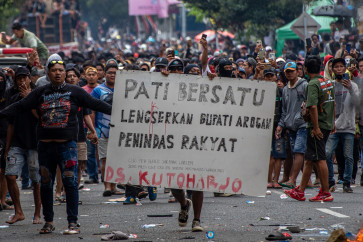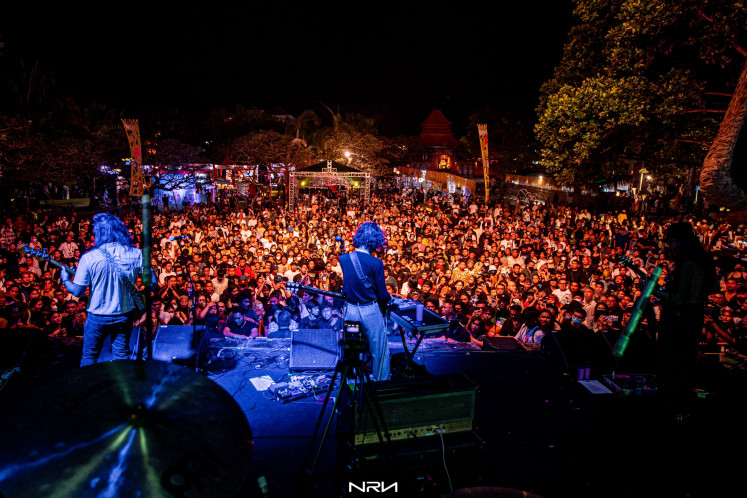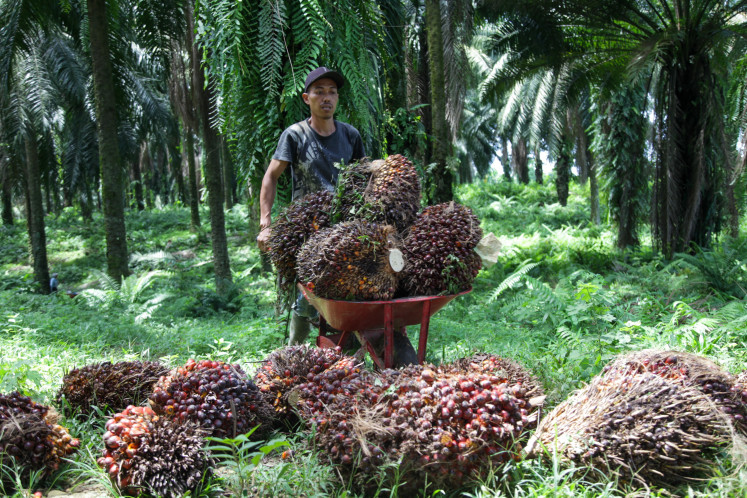Popular Reads
Top Results
Can't find what you're looking for?
View all search resultsPopular Reads
Top Results
Can't find what you're looking for?
View all search resultsBylaw draft to protect rice fields
The Bali administration will introduce a bylaw on land protection in an effort to curb the disturbing rate of rice field conversion, a senior official said
Change text size
Gift Premium Articles
to Anyone
T
he Bali administration will introduce a bylaw on land protection in an effort to curb the disturbing rate of rice field conversion, a senior official said.
It is estimated that up to 1,000 hectares of rice fields are converted annually into tourism facilities
and housing development on the island, where the lucrative tourism industry has risen to be the primary economic backbone and pushed aside the once powerful agriculture sector.
The island’s intellectuals and community leaders fear that the existing trend will not only endanger the island’s food security but, most importantly, shake the very foundations of the island’s rich cultural tapestry, which for centuries has been sustained by the rice-growing culture.
Provincial agriculture agency Made Putra Suryawan pointed out that the bylaw would be the local implementation of the 2009 Law on rice field protection issued by the central government.
“The law will serve as the legal foundation for the bylaw. We will draft the bylaw this year and hopefully by this time next year the bylaw will be accepted by the local legislative council,” he said.
The bylaw will impose a stricter mechanism of control and monitoring on rice field conversion. It will also make it mandatory for the regency level administration to implement a series of measures aimed at protecting the existing rice fields.
“The measures should cover protection of rice fields and water resources as well as preventive
measures aimed at safeguarding the rice fields and water resources from the threat of chemical pollution,” he said.
Moreover, farmers would be obliged to maintain the rice fields, utilize them for agricultural
purposes and protect the irrigation networks.
Central Statistics Bureau (BPS) Bali office data shows that in 2010 the total number of wet rice fields on the island reached 81,908 hectares, down by 23 hectares from the total area in 2009.
The total number of non-rice field agricultural land also decreased from 274,092 hectares in 2009 to 273,363 hectares in 2010.
Udayana University’s professor of agriculture Wayan Windia was pessimistic that the bylaw would be able to halt the conversion rate.
“The bylaw will be a useless piece of legislation, it will not bring any benefit,” he said.
Windia argued that the government should understand the real reasons that forced the local farmers to sell their rice fields before drafting any policy.
They sold the rice fields because, economically speaking, farming had ceased to be a financially viable source of livelihood for them.
“The farmers only ask for simple things, such as a stable and sustained supply of water and that the government provide subsidy for their land and property taxes,” he said.
Windia pointed out that housing developers had closed down irrigation channels, robbing farmers
from the water supply they desperately needed.










